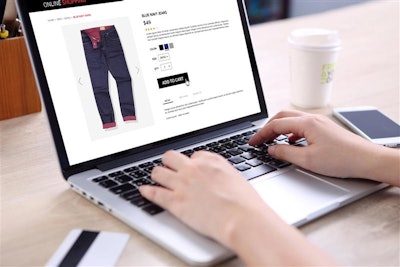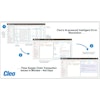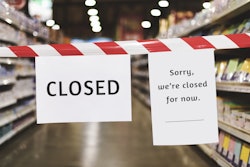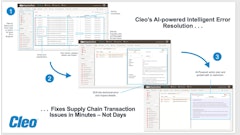
Last peak, after months of navigating supply chain shortages brought on by the e-commerce boom, most merchants were prepared for an unusual and tumultuous holiday shopping season. However, there tends to be a lack of urgency with merchants about this year’s peak planning. Especially in the United States where vaccination rates are relatively high, and in many ways, life seems to have gotten “back to normal,” merchants seem to be unaware of the supply chain storm that’s brewing and threatening to upend this year’s peak.
The truth is, the supply chain simply hasn’t gotten a break since the beginning of the Coronavirus disease (COVID-19) pandemic. During what would have usually been a slow shipping season, businesses rushed to re-stock inventory depleted during COVID-19 shutdowns, worsening already unprecedented freight delays. As the months ensued, supply chains were dealt one blow after another, including:
· A spending spike leading to a major shortage in shipping containers late last year.
· Winter storms shutting down major freight transportation throughout the Southeastern United States.
· The Ever Given blocking the Suez Canal for nearly a week.
After an unparalleled 18 months of disruptions, the state of international freight is shaky at best, and with the pandemic still raging in many parts of the world, the supply chain is not out of the woods yet. This holiday season may look completely different than last year’s, but it will hardly be “back to normal.”
2021 supply chain challenges
The spike in COVID-19 cases in China’s Guangdong province has forced major ports to operate at limited capacity, leading to severe backups. Wait times to berth at the Shenzhen port (the third largest in the world by container volume) have increased exponentially from an average of 0.5 days to 16 days. Meanwhile, backups are beginning to affect other nearby ports as vessels are diverted to Guangzhou, Guangxi, Yunnan, Hunan, and Hubei.
Once inventory is stateside, it faces even further delays. Average lead times for goods imported from Shanghai are up 135% due to congestion in L.A. and surrounding ports. And, it's not just a race against the clock. Merchants are also feeling the pains of rising freight costs. The cost of moving a container from China to the West Coast of the United States has increased 34.5% since the beginning of 2021 and a staggering 228% year over year.
Large, well-resourced enterprises have rushed to stock up for 2021 peak and beyond, and even the country’s biggest importers are struggling to find space on container ships.
Even as more manufacturing moves stateside, factories are struggling with rolling raw materials shortages, which have affected materials from lumber to plastics to cardboard. Major brands have been forced to raise prices on some of their core product offerings.
The opportunity for SMBs
For small and medium-sized businesses (SMBs), this means that the time to act is now. Merchants who have grown accustomed to forecasting and ordering inventory on a quarterly basis now need to be thinking about ordering inventory 6 months in advance. Merchants who don’t have their inventory stateside by the end of August likely won’t be prepared for Black Friday. Their customers will be faced with backorders and out-of-stock notifications that shoppers frankly won’t stand for at the holidays.
What does that mean for merchants who are prepared when holiday demand comes? For one thing, they can expect turnovers from their competitors as consumers go in search of alternatives. Ware2Go’s 2020 consumer survey revealed that 55% of shoppers made a purchase from a brand they had never done business with before the pandemic. With this year’s compounding effects of freight delays and supply chain shortages, that number is projected to be very comparable this holiday season.
That creates an opportunity for merchants of all sizes to win over new customers this year, and that’s why merchants should not only order inventory earlier than they traditionally would, but also order more of it -- doubling their orders if possible.
This may seem like a major pivot for SMBs accustomed to operating on a just-in-time (JIT) inventory model. And, typically, merchants should determine their own risk tolerance when it comes to procurement and inventory planning. During a “normal” year, merchants should take a higher risk approach in order to create more margin and free up capital to invest back into their business. But, this peak season is far from normal, so merchants should take a more conservative approach. The risk of being caught with empty shelves when shoppers are ready to spend is far greater than the risk of having unsold inventory on-hand at the beginning of Q1.
Clearly, every business operates differently, and brands should carefully consider all of the implications of this decision, including:
- Transportation costs. Freight costs are at an all-time high. Some merchants may be tempted to postpone replenishment orders until costs level out, but freight costs are unlikely to stabilize this year. In fact, they’re more likely to continue increasing. That means that today’s elevated freight costs are probably as low as they’re going to be. If transportation costs continue on their current trajectory, merchants who stock up now are going to look at a 30-55% savings in transportation costs compared to those who wait.
- Long-term and bulk storage. Merchants are probably not used to storing 6 months’ worth of inventory at a time. That means they’ll need a flexible fulfillment partner that won’t lock them into an inflated storage minimum or impose unreasonable caps. Finding a flexible fulfillment partner now will also build resilience into the supply chain, which should be a major priority for brands moving into 2022 and beyond.
- Risk of unsold inventory. Consumers have been fickle, and demand forecasting over the past year has been challenging to say the least. SMBs may be concerned about not selling through their inventory, but it’s more likely that demand will be greater than ever as competitors struggle to get inventory in time. Having unsold inventory at the end of the holiday shopping season will have little more consequence than giving merchants some breathing room at the beginning of Q1 as they plan their next replenishment order.
- Capital expenditure. For SMBs still concerned about the upfront expense of investing in and carrying more inventory, the rewards far outweigh the risks in this scenario. Merchants who are stocked and ready this peak season will see an influx in demand and will control the cost when their competitors are stocked out.
- A flexible fulfillment model. To meet the demands of a major seasonal spike in sales, SMBs need a fulfillment provider that can scale up quickly and is capable of fulfilling all order types across all sales channels.
2020’s supply chain woes are not yet in the rearview mirror. The recent spikes in COVID-19 cases in China are a telltale sign that the labor market is still at risk, and shortages and delays are still a threat to the global supply chain. Not to mention that this hurricane season is already shaping up to be an active one, with a predicted 20 named storms. This level of uncertainty means that for SMBs looking for sustainable growth this peak season and beyond, preparedness is key to a resilient supply chain.

![Pros To Know 2026 [color]](https://img.sdcexec.com/mindful/acbm/workspaces/default/uploads/2025/08/prostoknow-2026-color.mduFvhpgMk.png?auto=format%2Ccompress&bg=fff&fill-color=fff&fit=fill&h=100&q=70&w=100)







![Pros To Know 2026 [color]](https://img.sdcexec.com/mindful/acbm/workspaces/default/uploads/2025/08/prostoknow-2026-color.mduFvhpgMk.png?ar=16%3A9&auto=format%2Ccompress&bg=fff&fill-color=fff&fit=fill&h=135&q=70&w=240)










